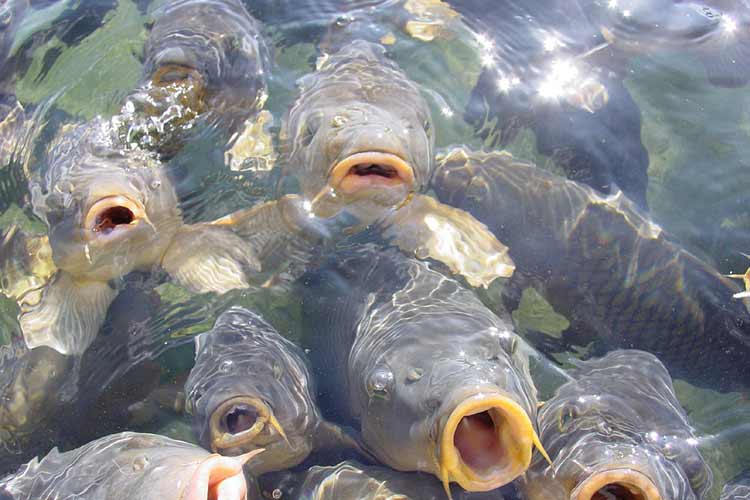
Carp gather in numbers near the docks around Lake Mead. Science is a continuous process; the more we observe the natural world, the more questions arise about the phenomena around us. As our questions become more specific and increasingly complex, we must devise more creative and detailed studies to answer them. This cycle fosters the need to problem solve and find new ways to answer questions, sometimes in unlikely places. Such is the case in Lakes Mead and Mohave, where researchers are investigating and working to help struggling native razorback sucker populations. Meanwhile, a seemingly endless supply of non-native carp populations also dwells in these lakes. Problem-solving skills have led these scientists to use common carp as surrogate study organisms for razorback suckers to learn more about this endangered native fish. We see them swimming in the lakes in giant schools and desperately breaking the water’s surface with their massive jowls in hopes of someone throwing food into the water. Their population is healthy (perhaps even too healthy) and yet they have been swimming in this area since before Hoover Dam was created. While not native to the Colorado River, carp may have been some of Lake Mead’s first fish inhabitants. However, as the carp population thrives, native razorback suckers struggle to survive – endlessly threatened by a variety of factors including habitat loss, being hunted by non-native fish, and contaminants in the waters. It is in this spirit that scientists working on behalf of the USGS (United States Geological Society), the U.S. Fish and Wildlife Service and the National Park Service began to see the common carp as more than just a non-native, at times over-populated and even intrusive fish, and instead as test subjects at Lake Mead. Interested in the relationship between contaminants in the water and fish populations, especially for the native and severely threatened razorback sucker, scientists began to wonder, “can we study the very abundant common carp as a surrogate species to learn about the issues facing the elusive and under-represented razorback sucker?” Using surrogate fish species is not a new idea. Scientists in Japan have had some success using reproductive surrogates by injecting the sperm and egg of endangered fish species into another fish in an effort to re-build the endangered population. Likewise, the scientists at Lake Mead, as well as conservation scientists around the world, study non-endangered common species (such as carp) as research surrogates (substitutes) to investigate the health and threats facing an endangered species. Endangered species are too limited in number to observe fully in the wild or to be sacrificed for organ and tissue studies. Hypothesizing that contaminants entering the lake from municipal water use can impact fish such as razorback suckers, researchers turned to carp to learn about contaminant effects without studying those effects in razorbacks themselves. |
Last updated: December 8, 2016
